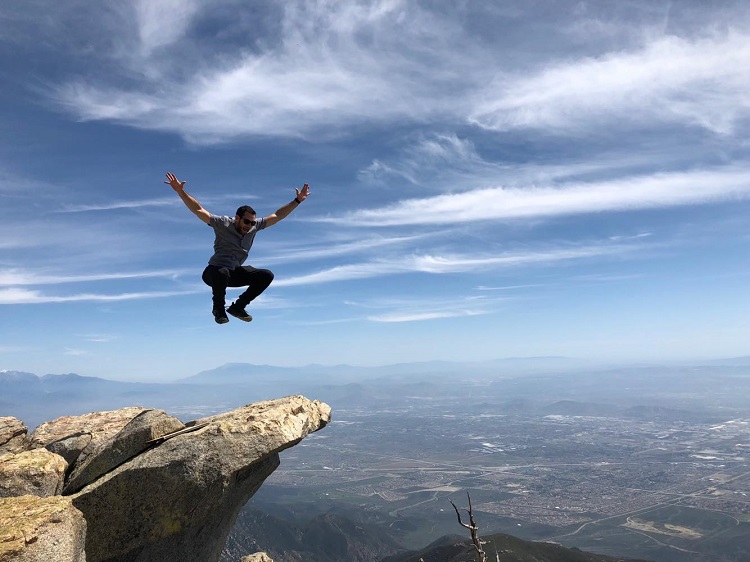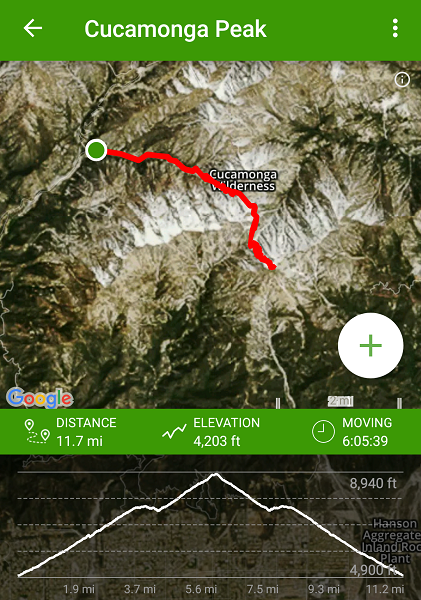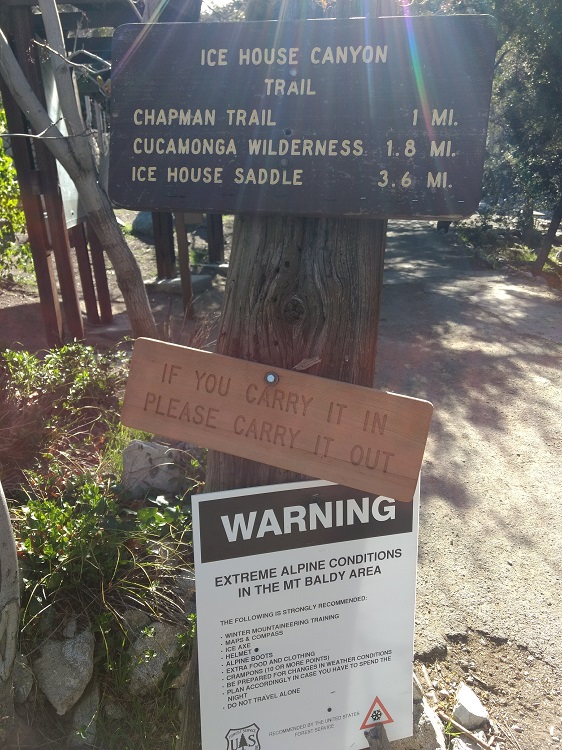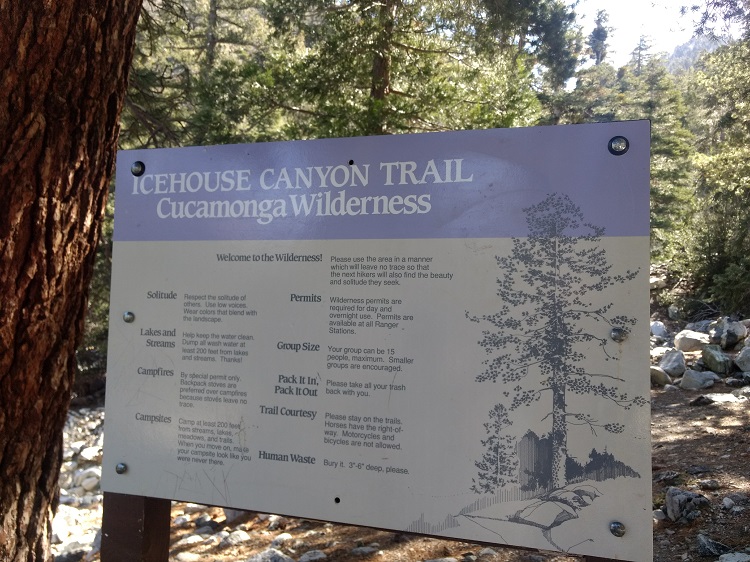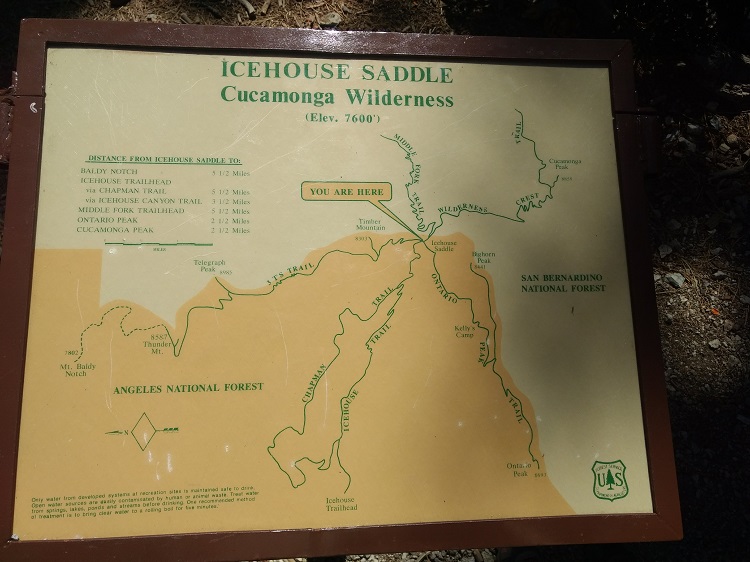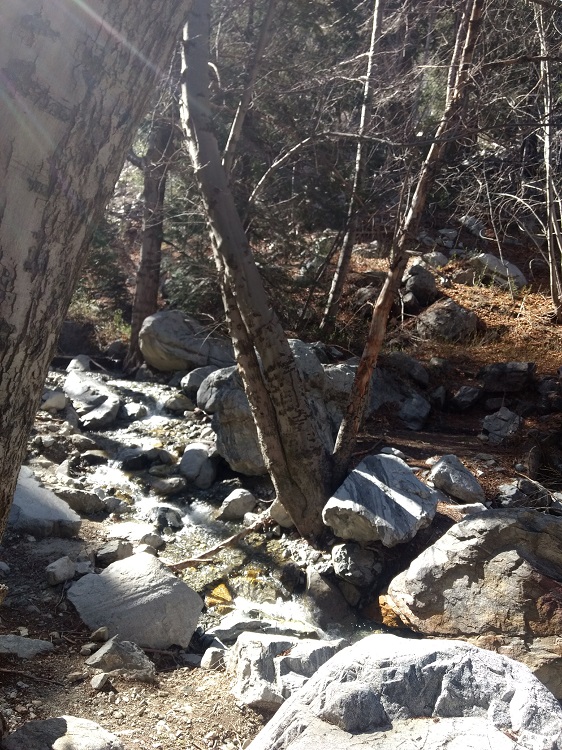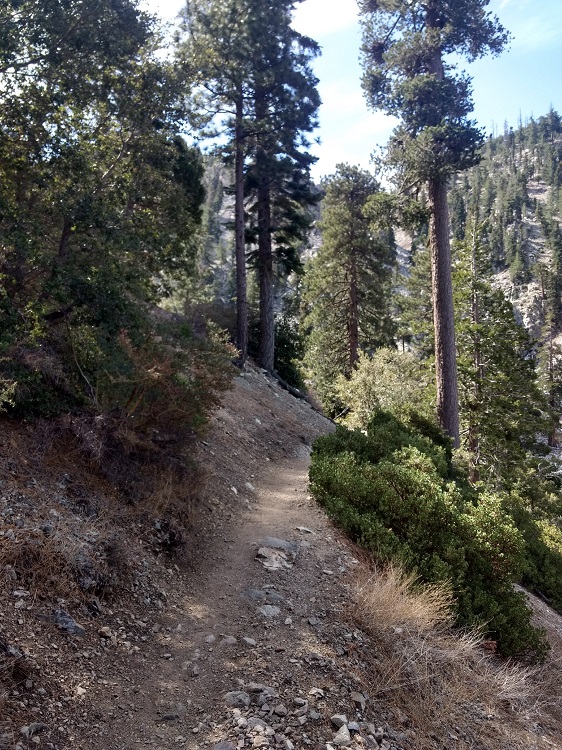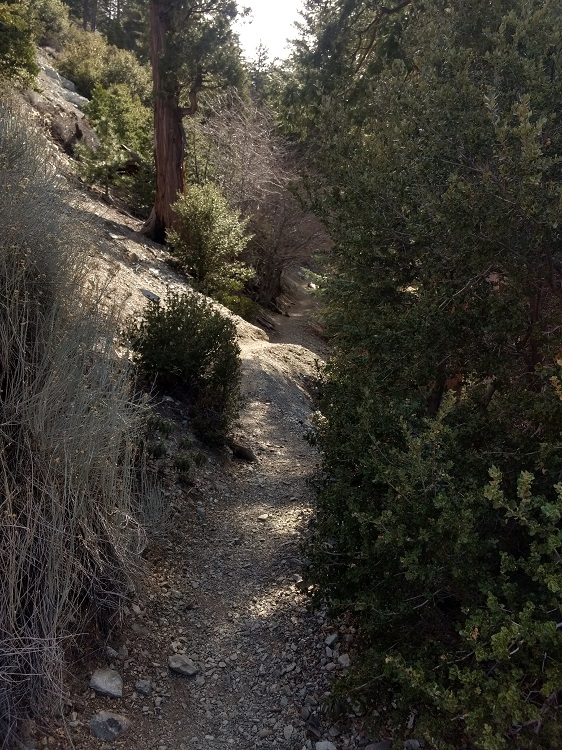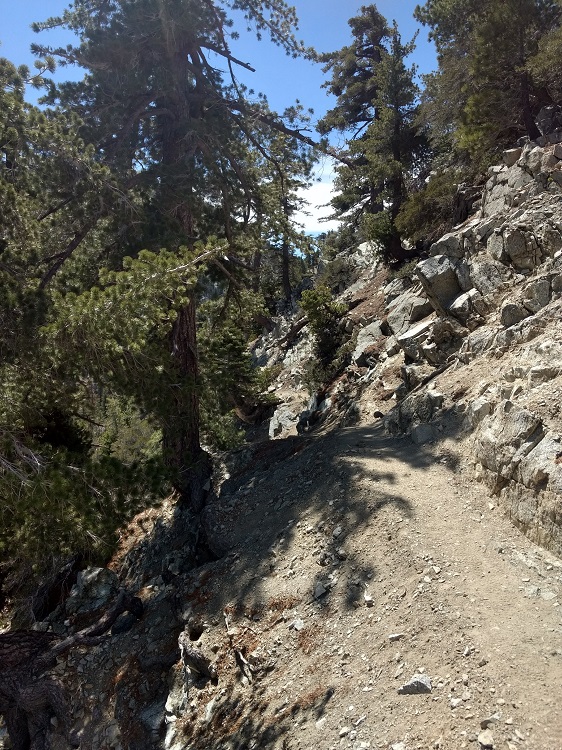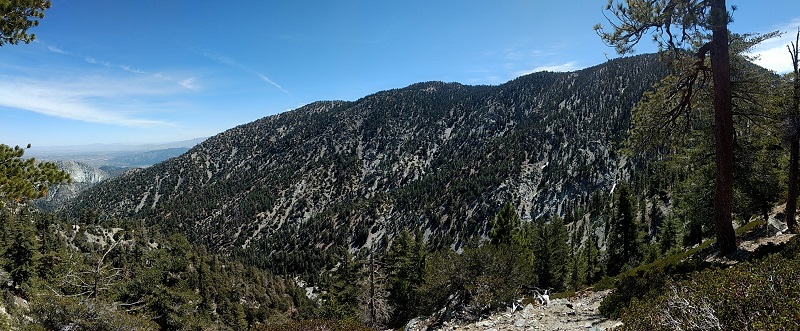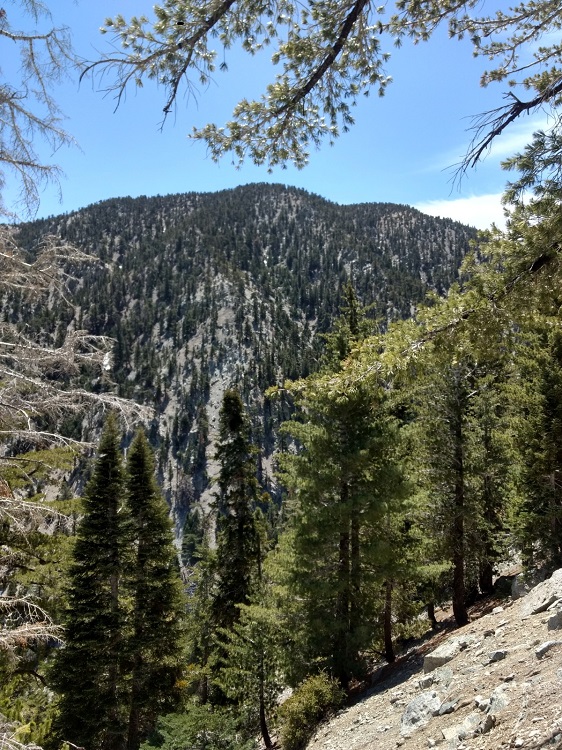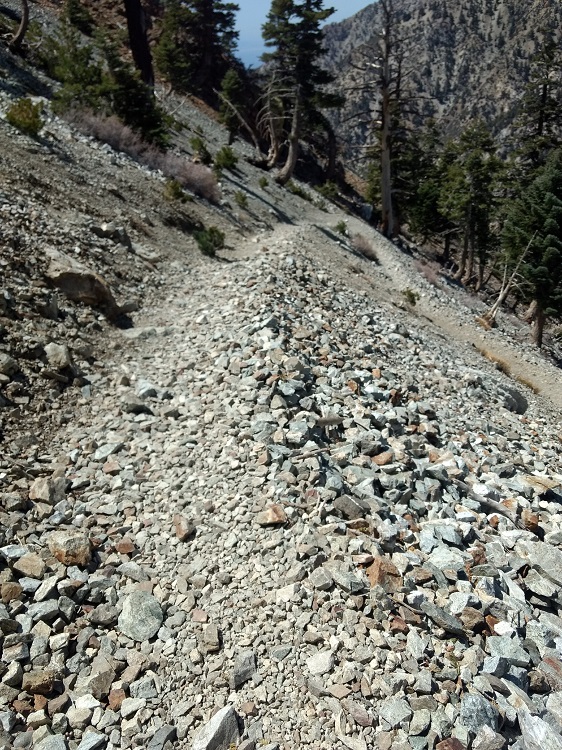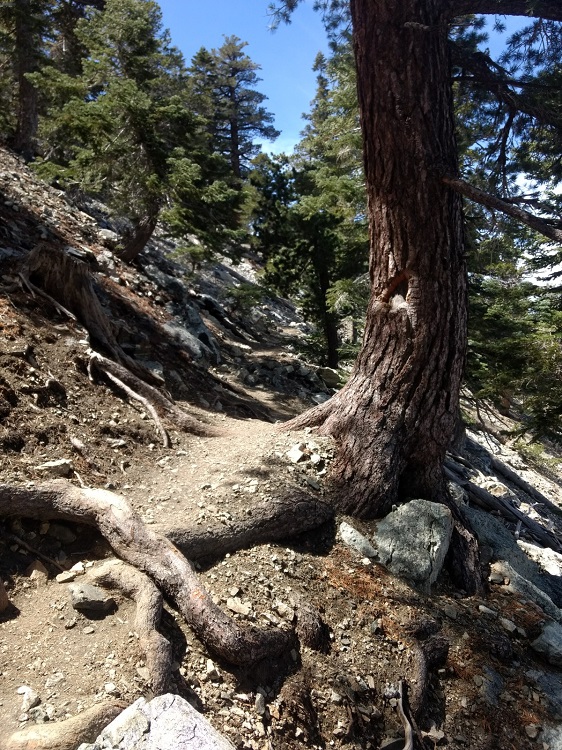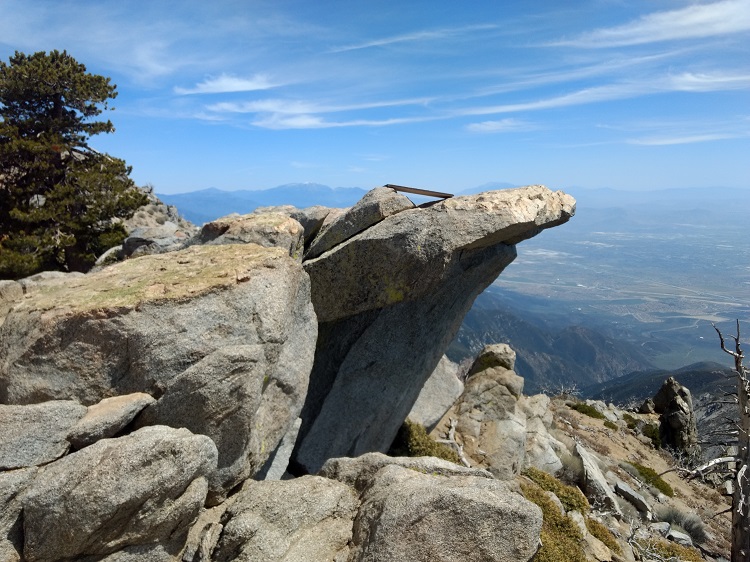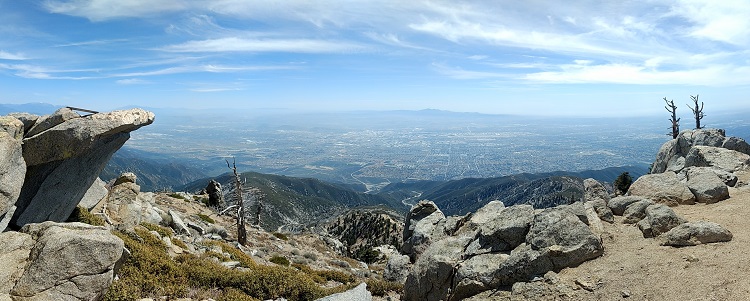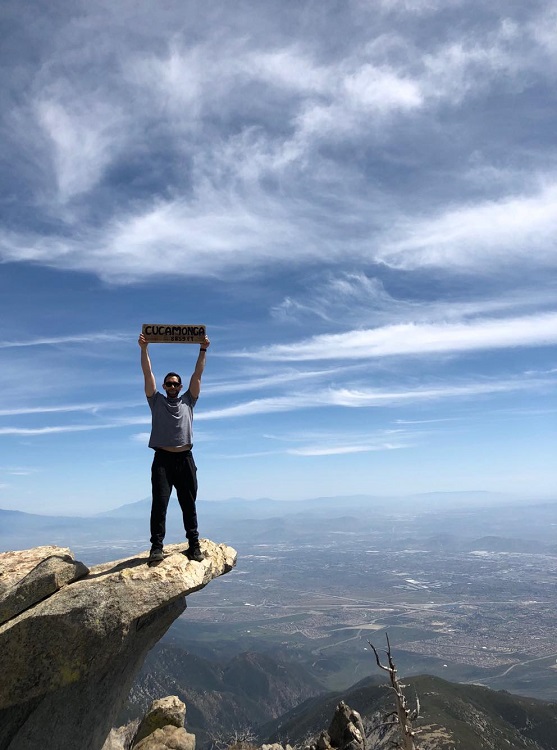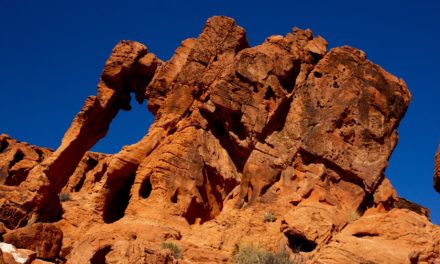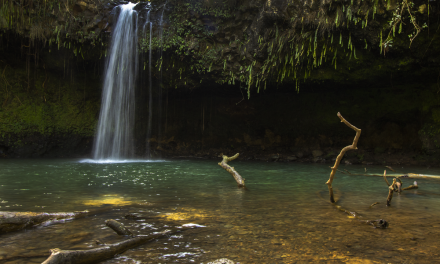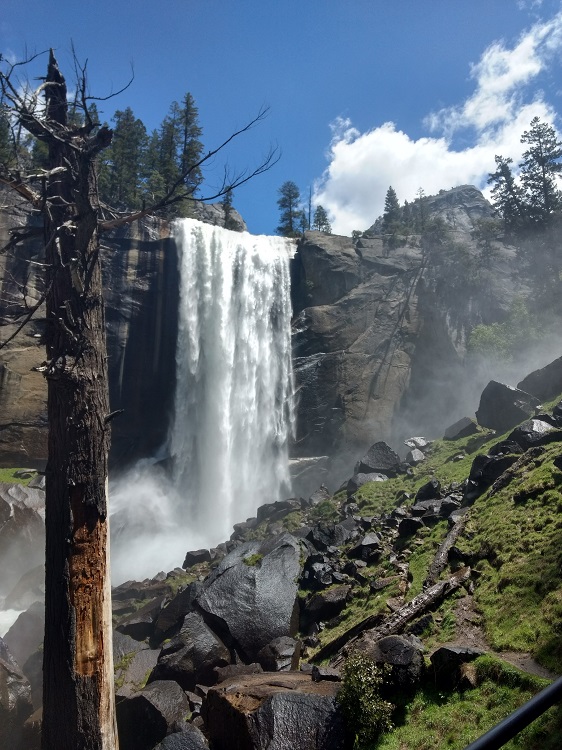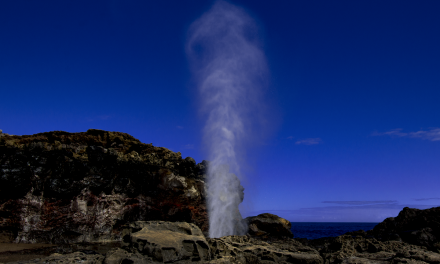Cucamonga Peak is located in the Angeles National Forest within the San Gabriel Mountain Range. This peak is number two on the So Cal Six Pack Of Peak Challenges right behind Mount Wilson. The peak is over 8,000 feet tall, lengthy, and challenging. The reward is an iconic rock at the top as well as incredible views of the desert and Los Angeles Basin.
Hiking Cucamonga Peak Via Icehouse Canyon
For 2018, one of my hiking goals is to complete the So Cal Six Pack of Peak Challenge. This challenge includes some of the highest peaks in Southern California. Cucamonga Peak is a long and steep out and back trail within the Angeles National Forest. Overall, the peak is highly trafficked, but more people seem to just hike up to the saddle rather than the peak.
The trail starts in Icehouse Canyon near a large canyon carved by a small stream. The trail travels through an oak covered canyon that eventually gives way to a typical Southern California pine forest. About four miles up is a saddle. The trail forks off and to the left is Thunder Mountain Peak and to the right continues to Cucamonga Peak. The trail then takes a steep ascent to an infamous rock and beautiful views of the desert and city below. Take some time up at the peak as the Cucamonga Peak rock is great for photo opportunities.
Have you recently hiked the Cucamonga Peak trail? Leave a comment with recent conditions or feel free to share your pictures in the comments
- Overall Difficulty: 80%
- Overall Views 85%
Cucamonga Peak via Icehouse Canyon Quick Facts:
Cucamonga Peak Directions:
Click here for driving directions to Cucamonga Peak. Cucamonga Peak is located in the Angeles National Forest. The parking lot is rather small and fills up pretty quick. If it’s full, you’ll need to find street parking. Don’t forget to purchase your adventure pass. You can also use an America The Beautiful pass if you’re an annual pass holder. Permits are required to hike Cucamonga Peak. Permits are usually stocked at the trailhead. The permits are used to keep track of hikers in case an accident happens and you go missing. If there are no permits, fill out a blank piece of paper with your name, address, emergency contact information, and make and model of your car.
Cucamonga Peak Pictures:
- The Icehouse Canyon trailhead is a major beginning point to many peaks in this area.
- Wilderness Permits are required and are located at this small box in the beginning of the trail.
- The trail head begins through this canyon carved out by a seasonal small creek. On good rain years this creek flows year round.
- Some o the several switch backs leading up to the Icehouse Saddle.
- Looking to the west from near the Icehouse Saddle.
- Looking at the back side of Cucamonga Peak from Icehouse Saddle.
- As the trail gains in elevaiton, the trail becomes this loose shale. This rock is slippery and evidence of rock slides is all over the place. During the winter this portion of the trail can be covered in ice. Use caution.
- The famous, Cucamonga Peak.
- The Los Angeles Basin as seen from Cucamonga Peak.
Who Cucamonga Peak Is For:
Novice Hikers: If you’re new to hiking, really consider if this hike is for you. This is a strenuous hike with unstable terrain. Hot summer days and any snow or ice on the trial during winter should exclude you from this hike. Those with physical limitations should not do this hike. I’d recommend hiking poles.
Advanced Hikers: This hike will be a challenge for advanced hikers. If you’re an advanced hiker, make sure you have adequate equipment if there is ice or snow on the trail. Hiking poles could be helpful but are not necessary.
Expert Hikers: Those who have a lot of experience hiking in steep unstable terrain should have no difficulty. While it is a tough hike, weather conditions can make it harder. If you have proper equipment, you’ll have no problem.
It’s always a good idea to be aware of what type of hiking level you’re at.
Best Time Of Year To Hike Cucamonga Peak:
Any time of year. However, hot summer days will be extremely uncomfortable. Because of the altitude, the peak is usually within the snow line. Winter weather can hinder visibility and put your safety at risk. Mild fall, winter, spring, and summer days are the best.
Cucamonga Peak via Icehouse Canyon Trail Conditions:
The trail is very well maintained in the canyon. However, as the peak gets out of the canyon, the trail becomes steep and in some places very unorganized. The trail is cut into loose granite and rock slides are not uncommon for the Cucamonga Peak trail. After winter storms, ice can make some of the trail impassable for those without spikes on their shoes or ice picks. Ice on the trail makes this hike very dangerous. Only those with adequate winter gear should attempt the hike during winter-like conditions. During the summer, extremely hot conditions can persist. Bring lots of water; at least 2L. I brought 2L and ran out. Luckily, I had another liter with me. The trail is also mostly exposed to the sun and there isn’t much shade.

